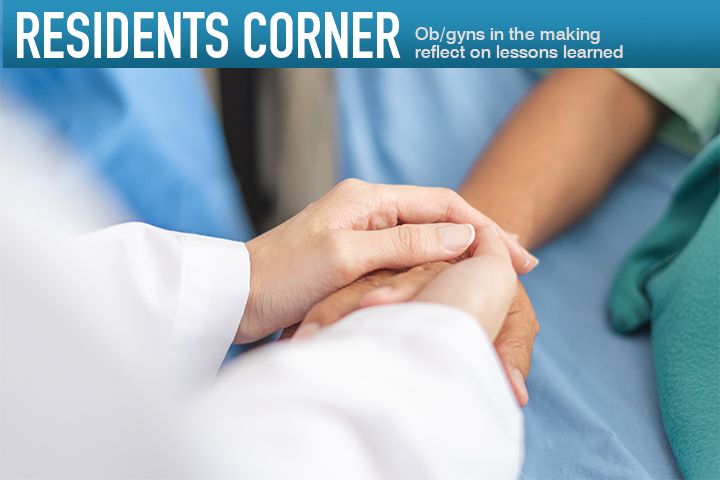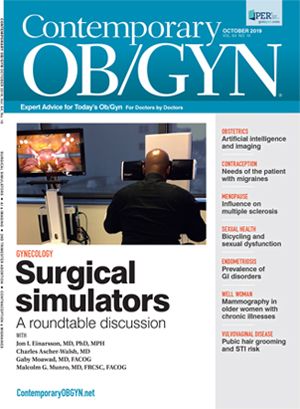The other difficult delivery
Although residency teaches doctors to deliver babies, how to deliver bad news must also be a part of the curriculum.
©Nattakorn - stock.adobe.com

A missed diagnosis
At the start of my inpatient Maternal Fetal Medicine rotation last month, I was called to triage to counsel a mother with monochorionic, diamniotic twins.
This particular patient, unemployed and underserved, had had very little prenatal care. She knew how far along she was and that she was having twin girls, but the high-risk chorionicity of her pregnancy had been missed at her initial prenatal visit, and she had not undergone an ultrasound since. It was only now, presenting to our triage with a painfully distended abdomen, that she learned her fetuses actually shared a single placenta. Because of this missed diagnosis, the woman had not had the regular ultrasound surveillance that might have detected the twin-twin transfusion syndrome now affecting her pregnancy.
The patient was so polyhydramniotic, she was having difficulty breathing. She was in shock. We discussed that her condition was now considered Stage IV, and the twins were unlikely to survive. We offered her an amniocentesis, knowing that removing the excess fluid in the remaining amniotic sac would relieve some of the discomfort of her swollen abdomen, but she declined.
The woman asked us to scan her abdomen a final time. One of her fetuses was hydropic, while the other was severely growth restricted. She sobbed quietly, and her boyfriend, sitting on a chair by the bed, played tinny music from her phone to comfort her. After the scan we stepped out of the room, letting the patient rest a while.
"Have you told her what's happening?"
An hour or so later, an urgent phone call brought me back to triage. Our patient had gotten up to use the restroom when her water broke. Now she was bleeding, hemorrhaging onto her bed. I launched into emergency mode, frantically directing the various people in the room.
“Place a second IV! Have you called anesthesia? We’ll need to make sure she’s typed and crossed for four units. When was her last CBC? Is OR 3 ready?”
Amid the chaos occurring in this tiny room, I felt a tap on my shoulder. It was my attending, who leaned toward me and asked calmly, “Have you told her what’s happening?”
In medical school, they tried to teach us how to deliver bad news. Find a quiet room, make sure you’re sitting down, look earnest, begin with a warning shot: the results are back and I’m afraid they are not good.
In reality, I find it impossible to have this much control over my environment in the hospital, especially in the midst of an evolving crisis. In clinic recently, I was asked by a midwife to help troubleshoot a malfunctioning ultrasound machine. I managed to fix the technical problem, but in doing so, I noticed that the fetus had no heartbeat. And so it was me, a stranger this couple had never met but the one caught holding the ultrasound wand, who told them they had had a miscarriage.
This is not surprising in a profession that oscillates so rapidly between good and bad news. One of my attendings uses the phrase psychological whiplash to describe it. It is the idea that an ob/gyn can enter a room to deliver a baby, taking part in all the joy of that ecstatic, high-energy process and moments later, cross the hall and deliver a stillborn child while whispering commiserations to a grieving couple. Entering and leaving each room without clinging to the residue of emotion from either encounter is incredibly difficult and mentally taxing.
Another imperfect opportunity
Back in triage, with my patient hemorrhaging on the bed in front of me, my attending asked me again. “Have you told her what is happening?”
In all the frenzied panic, in ordering the chaos around me, I had completely forgotten about the patient. I had forgotten what she must be going through, what was likely going through her mind, how she must feel at the sight of so much of her own blood.
I was frozen, inarticulate, uncertain of exactly how I could explain what was happening. I wanted to say that when her water broke the placenta had likely abrupted, peeling off the uterine wall. This would most certainly lead to the death of her fetuses and, if we did not act quickly, would be life-threatening for her too. I wanted to sit down next to her, to console her. Here again was another imperfect opportunity, another time-critical moment to comfort this patient, to be the one to gently convey this terrible news.
But I was silent. I was stuck in place. After so much heartache and tragedy already, in the middle of this horrendous scene, I could only think of the next steps needed to keep this patient alive. In the quiet room, tinny music still played from the cell phone.
Finally, my attending stepped in, leaning close to the patient to explain what was happening. She held her hand all the way to the operating room and was beside her when she returned.
More training necessary
So far, my training has taught me to be an excellent resident. I can place orders, respond to consults, and write progress notes. I can recite the antihypertensive regimen necessary to control severe-range pressures or the Amsel’s criteria for diagnosis of bacterial vaginosis.
But I am still hoping residency will train me to be to be an excellent doctor. I am still hoping it will teach me to adapt, to see through the rigid guidelines to the terrified patient beneath. I hope that in the midst of an emergency, I can not only be level-headed and calm and make the right decisions, but also make them with warmth, generosity, and compassion.
Newsletter
Get the latest clinical updates, case studies, and expert commentary in obstetric and gynecologic care. Sign up now to stay informed.

